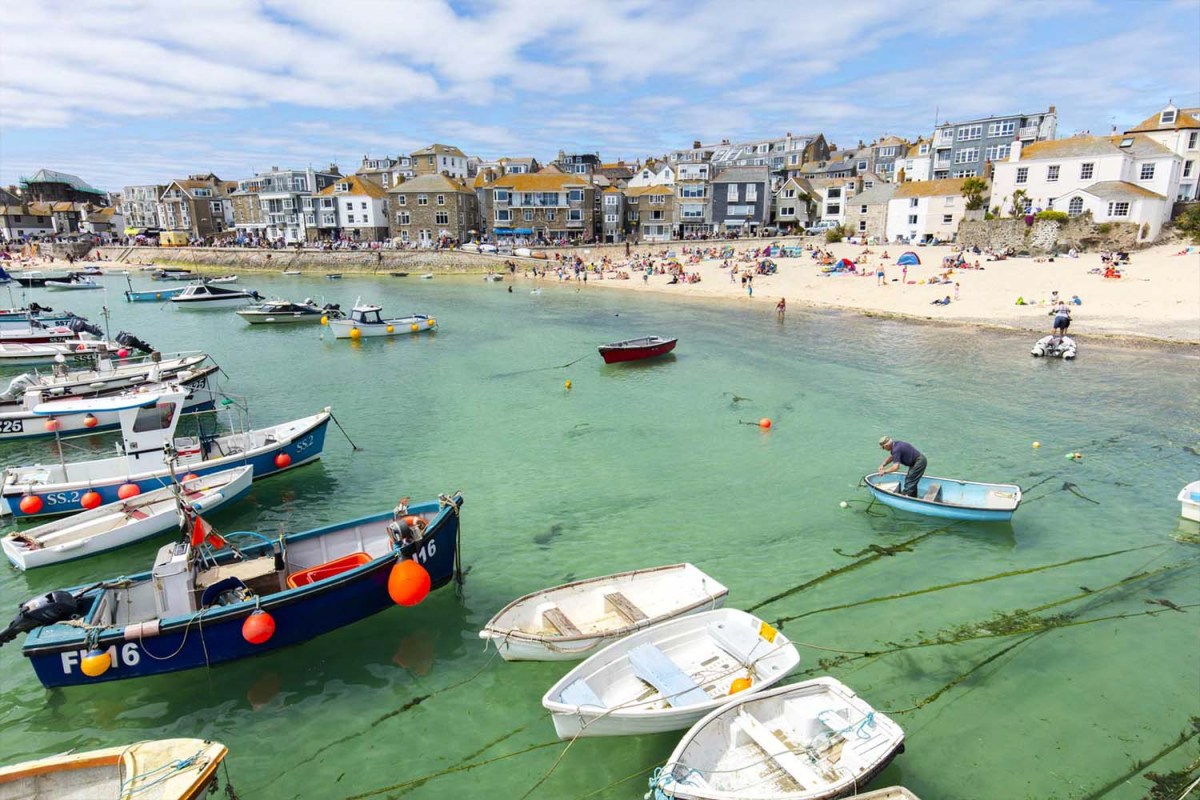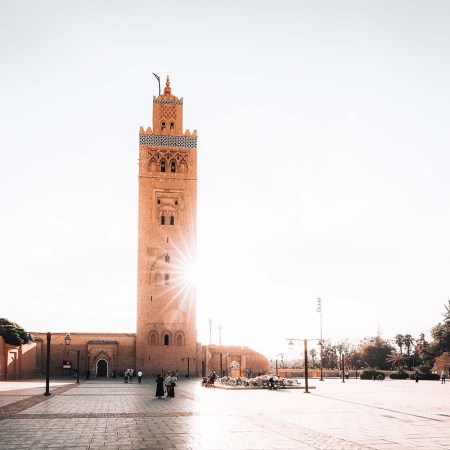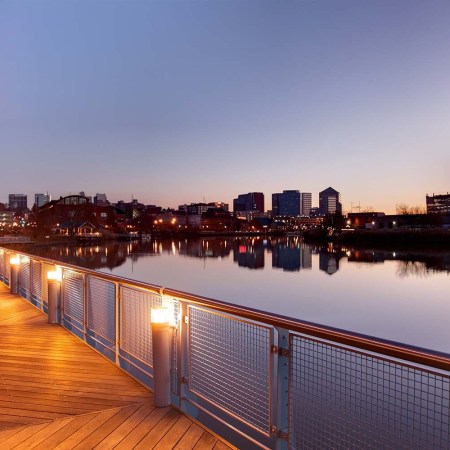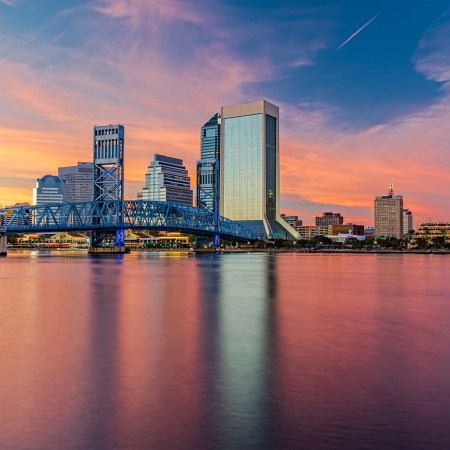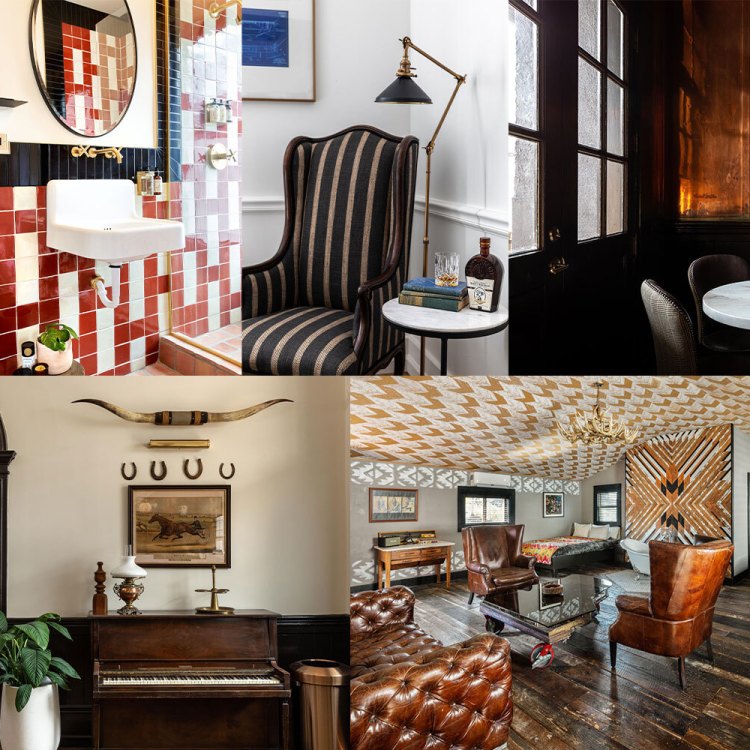With its rugged cliffs and rolling surf breaks — and when summer cooperates, blue skies, golden beaches and turquoise waters — England’s southernmost point has, on occasion, been likened to the “California of Great Britain.” While it’s possible to cross the county (colloquially referred to as Kernow by locals) in around two hours, don’t let the seemingly small stature of this peninsula fool you; there is plenty to fill days, even weeks, in Cornwall. Coastal walks, a food scene that spans Michelin-starred restaurants to centuries-old pubs and the iconic Cornish pasty, postcard fishing harbors and tucked-away artist studios. Did I mention subtropical islands that can be a total travel dupe for the Mediterranean? On that next U.K. trip, here’s why you should decamp from London and spend a few days exploring this laid-back corner of England instead.
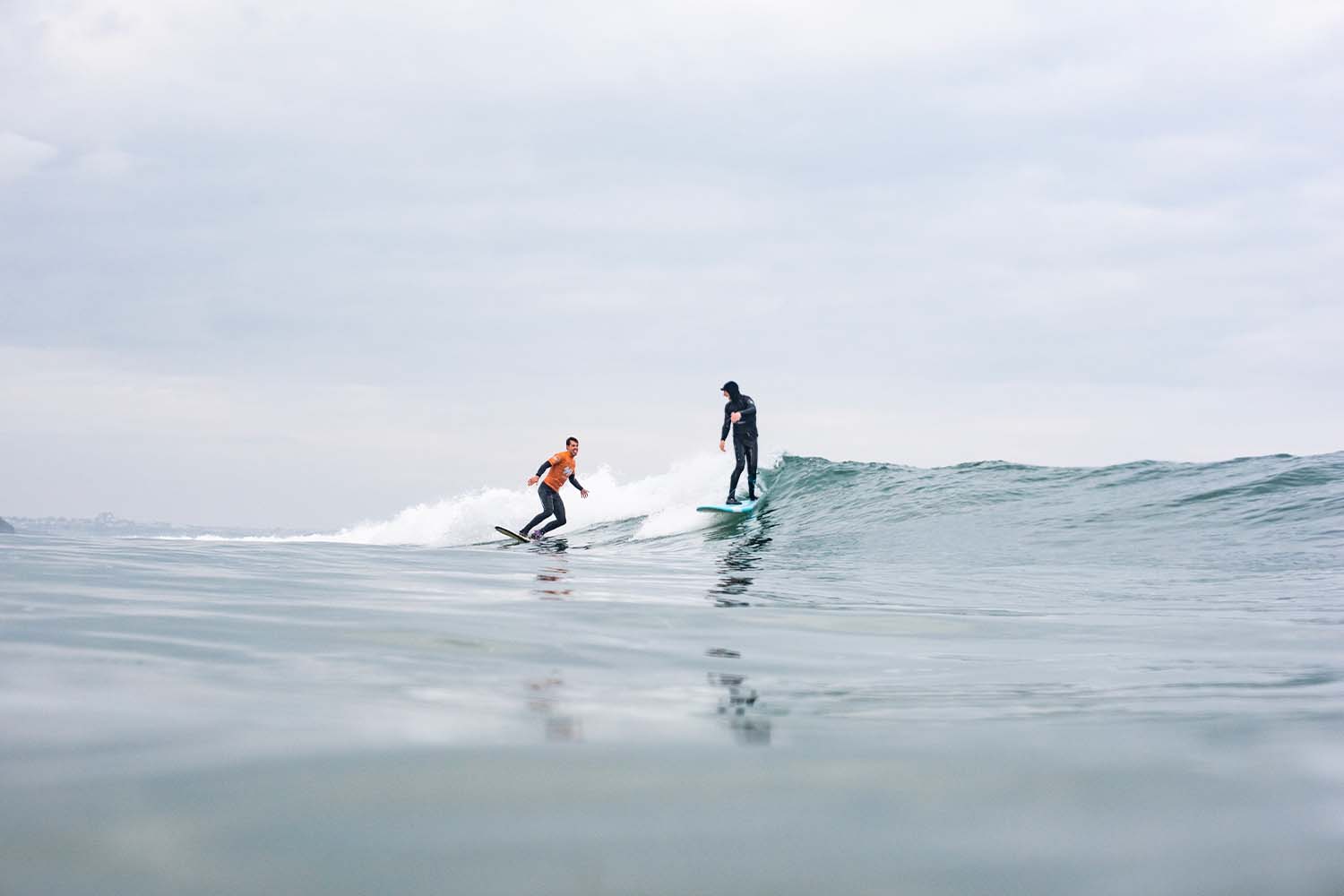
Getting to Cornwall
A five-or-so-hour drive from London on a good day (forget bank holiday weekends or peak school holiday months July and August), the fastest way to reach Cornwall is by flying into seaside town Newquay (Eastern Airways operates three direct daily flights from Gatwick) or taking the Penzance train from Paddington Station to the end of the line. Once here, a car is crucial, but driving is not for the faint of heart: you will navigate narrow country roads with tight bends and high hedges. Most U.K. rental cars are manual transmission (although available, you’ll pay a premium for an automatic), so good stick shift and clutch control skills are essential, too.
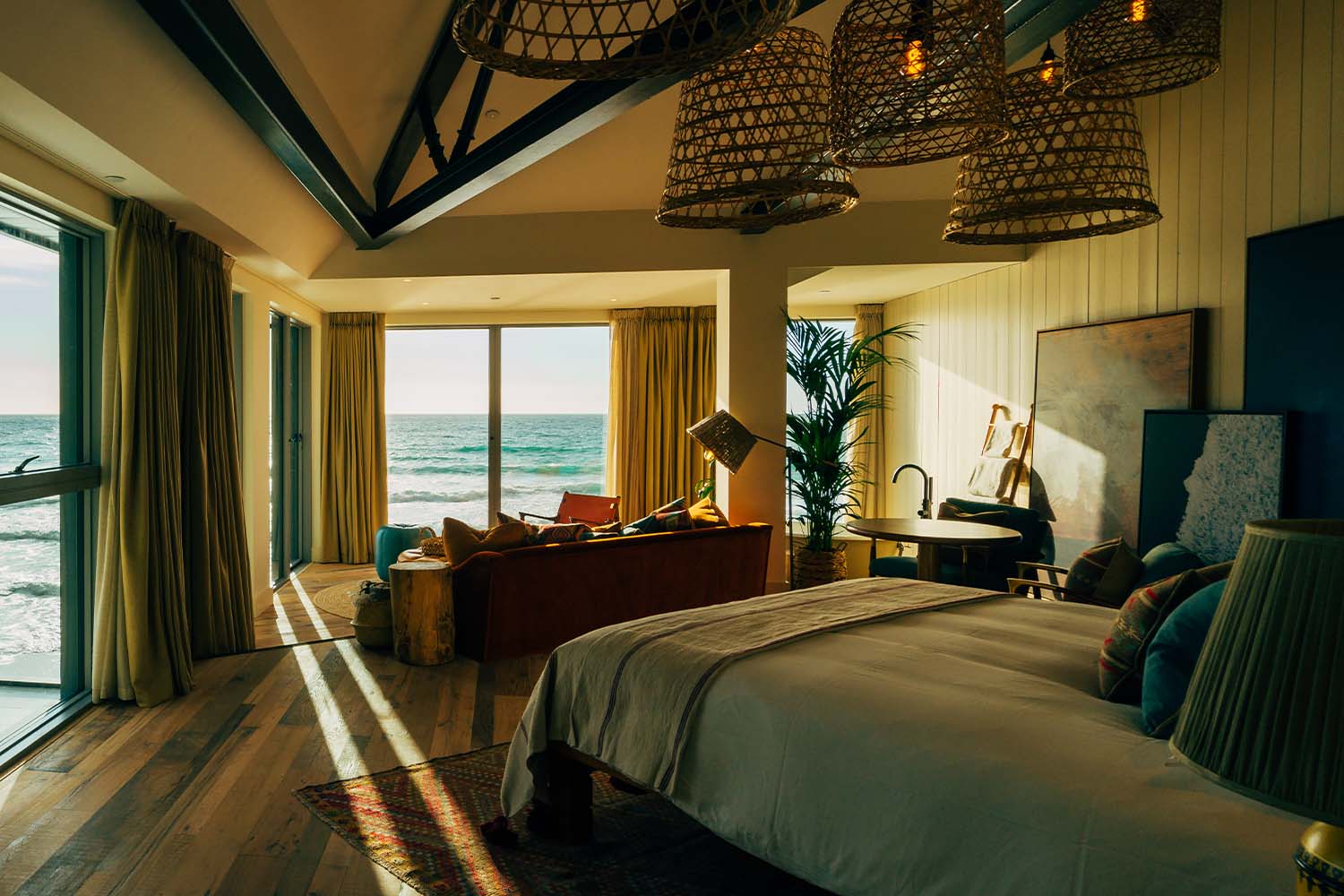
Where to Stay in Cornwall
Growing up in Cornwall during the late ’80s and ’90s, every summer silver-haired holiday-makers (a British person on vacation away from home) would drive down to spend a week or two in a caravan (often one they towed themselves, very slowly) or a Victorian-era bed and breakfast. But several years ago, Cornwall started to become trendy, which means “boutique” has taken off in a big way, and now a much younger, hipper demographic descends on the county year-round.
For a chic place to stay on the rugged north Cornish coast, consider the Watergate Bay Hotel in Newquay (aka the home of British surfing). Panoramic Atlantic Ocean views, high-luxe but laid-back interiors, and a swim club with a sea-facing sauna and outdoor hot tub set the scene here. Cornwall is famous for its waves, and guests can take lessons with on-site school, Wavehunters. The food is excellent, too, and the weekly six-course set seafood menu by local chef Emily Scott, which often features scallops and hake from Cornish waters, is a particular standout. As for all-star rooms, the Sea View Suites have floor-to-ceiling windows and freestanding soaking tubs while the Beach Lofts provide surf-in, surf-out access.
Farther south near Penzance (where you might arrive if taking the train), The Old Coastguard hotel in nearby Mousehole (pronounced “Mowzell”) is a former coastguard lookout post turned boutique inn set above the rocks at one of the county’s prettiest harbors. With just 15 stylish but homey rooms (no TVs, but stacks of books signed by local authors instead), the vibe skews more bed and breakfast. Located two miles from fishing port Newlyn, seafood and catch-of-the-day fish are featured on the menu with meals (breakfast, lunch and dinner) served on the terrace or in the sea-facing restaurant while the palm-tree lined lawn lends itself to a Cornish gin and tonic.
Penzance is a jumping-off point for visiting the Isles of Scilly (more on those shortly), which makes Mousehole an excellent base for exploring famous local sites around the Penwith Peninsula: Lands End, the clifftop Minack Theater and the westernmost surf spot Sennen Cove.
This Stunning Boutique Hotel Offers a Taste of the English Countryside at One of London’s Most Iconic Addresses
Live like a local at Beaverbrook Townhouse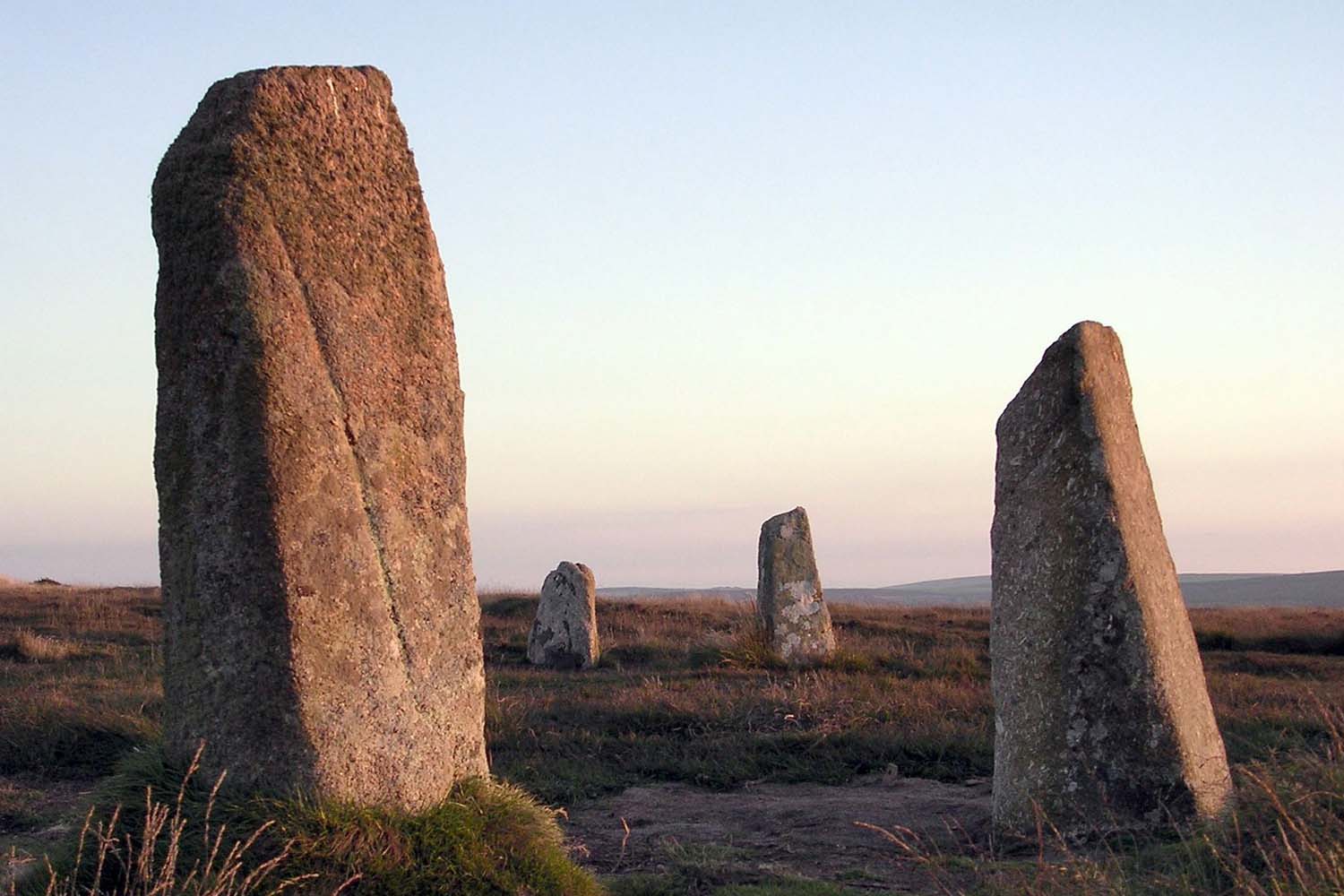
Visit Ancient Sites and Artists’ Studios
Cornwall has a unique Celtic heritage (fact: the Cornish are descended from Iron Age Celts), and with its ancient stone circles and quoits (think “Stonehenge light” monuments of granite uprights and a large capstone) if you know where to look, plus a clifftop castle at Tintagel some say was home to King Arthur, the county is veiled in myth and legend. North of Tintagel at the quite magical St. Nectan’s Glen, the Rocky Valley Labyrinth dates back 4,000 years to the Early Bronze Age — a public footpath here follows the Trevillett River as it meanders down the valley to the sea, and makes for a cracking afternoon walk. One best followed by a pasty from The Cornish Bakery.
These romantic landscapes made Cornwall a major draw for creative types, with the historic harbor fishing village St. Ives its most famous artist enclave. The venerable Tate Modern opened the offshoot Tate St Ives museum in 1993, and it’s a fine place to view modern and contemporary art beside the sea. A five-minute walk through town (when visiting, plan on an afternoon swim and picnic at Porthmeor Beach), the studio museum and sculpture garden of modernist British sculptor Barbara Hepworth is a must-see for the subtropical garden alone.
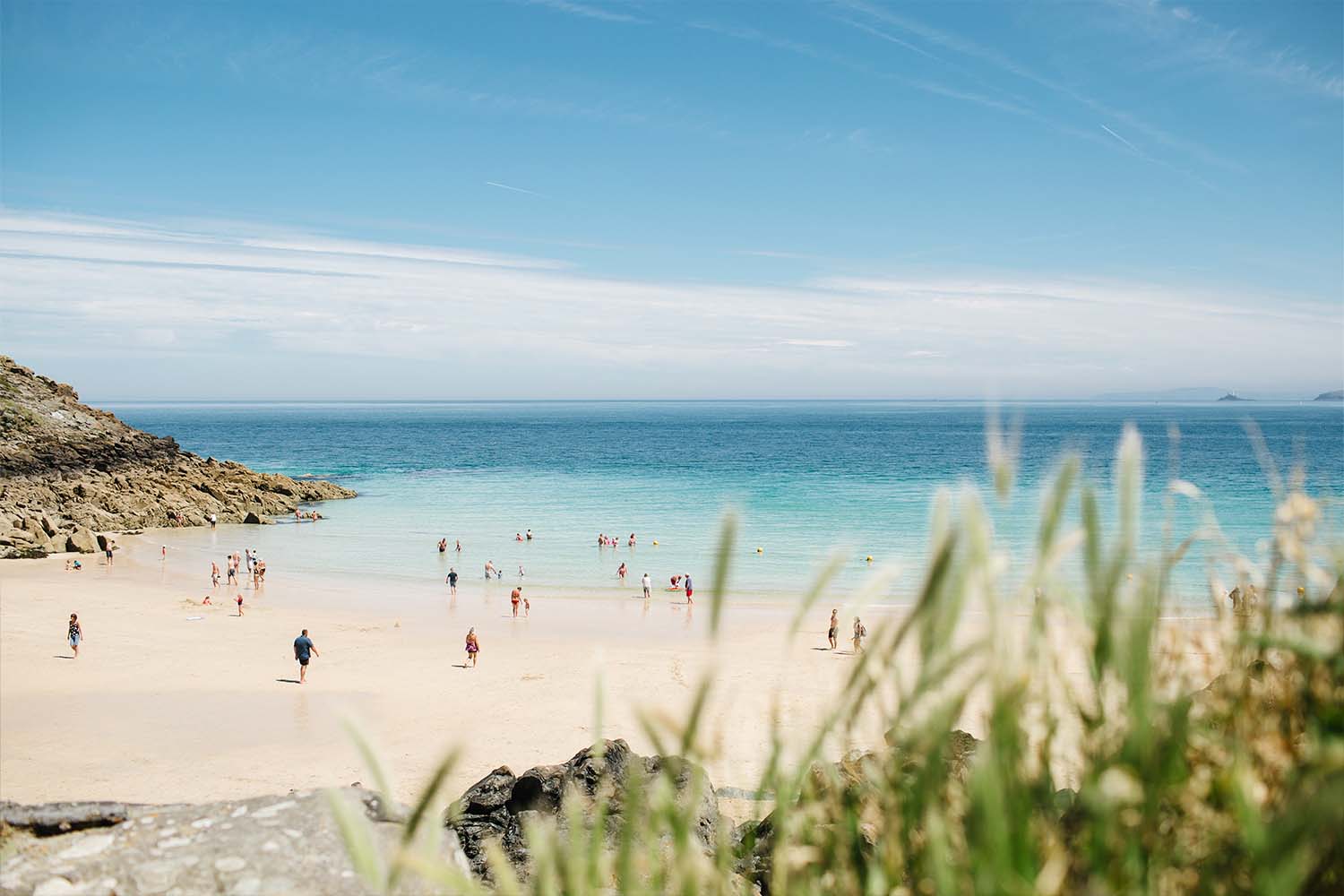
Go Cycling and Wine Tasting in the Camel Valley
Following an old railway line route once used by the London and South West Railway, cycling the mainly traffic-free Camel Trail is hugely popular and a great way to see some classic Cornish countryside. The scenic riverside cycleway runs for 17 miles from fishing port Padstow via market towns Wadebridge and Bodmin, passing through wooded countryside, moorland and alongside birdwatcher paradise, the Camel Estuary. Take your pick from over 200 rental bikes at Padstow Cycle Hire, including mountain and hybrid-style e-bikes, to make the journey.
While the U.K. is not traditionally considered a wine-growing nation, thanks to Cornwall’s maritime climate and diverse terroir, local winemakers have helped put British bubbly on the map. It would be remiss not to pop into Camel Valley Vineyard, located halfway between Wadebridge and Bodmin on the Camel Trail, to sample some. The first English wine producer to receive a Royal Warrant, Camel Valley created a limited edition Blancs de Blancs 2016 exclusively for fellow Royal Warrant holders, Fortnum & Mason, to mark the recent coronation of King Charles. Spend an afternoon among the vines with a tour or tasting (£18 to £25) and sip some of their current award-winning sparkling wines: a 2016 Classic Cuvee and a 2022 Camel Valley Pinot Noir Rosé.

Dine in Michelin-Starred Restaurants and Centuries-Old Pubs
English chef and restaurateur Rick Stein put Cornwall on the map in the mid-’70s, but the scene exploded when third-wave culinary wunderkinds Paul Ainsworth and Nathan Outlaw brought Michelin stars to the county with their reinventions of locally grown produce and sublime fish and shellfish. Kota in Porthleven (where chef Jude Kereama often forages ingredients) is a noted Bib Gourmand spot, while Coombeshead Farm in Lewannick earned a Green Star for its country cooking. One of the in-the-know hidden gems across the county includes seafood bar The Rocket Store in the north coast village of Boscastle (not far from Tintagel Castle).
On the south coast, you’ll want to pin The Hidden Hut (reached by foot just off the Southwest Coast Path at Porthcurnick Beach), Edie’s in Carlyon Bay (for unfussy Modern British dishes like gilt-head bream with broad beans), and low-key local pub The Mexico Inn near Penzance, which has several stellar vegan and vegetarian options. For a unique outdoor, often wood-fired dining experience (think washing-line cooked mackerel on the beach), contact chef Simon Stallard.
The pub is a British institution, and Cornwall has many, some dating back to the 11th century (see The Old Inn at St. Breward), and connected to the county’s smuggling heyday: the Jamaica Inn and The Turks Head in Penzance chief among them, where a 17th-century smugglers tunnel led directly to the harbor.
Named after the naval ship HMS Pandora (which was sent to capture Captain Bligh’s mutineers in Tahiti in 1779) locals often arrive by boat at the historic waterside Pandora Inn near Falmouth.
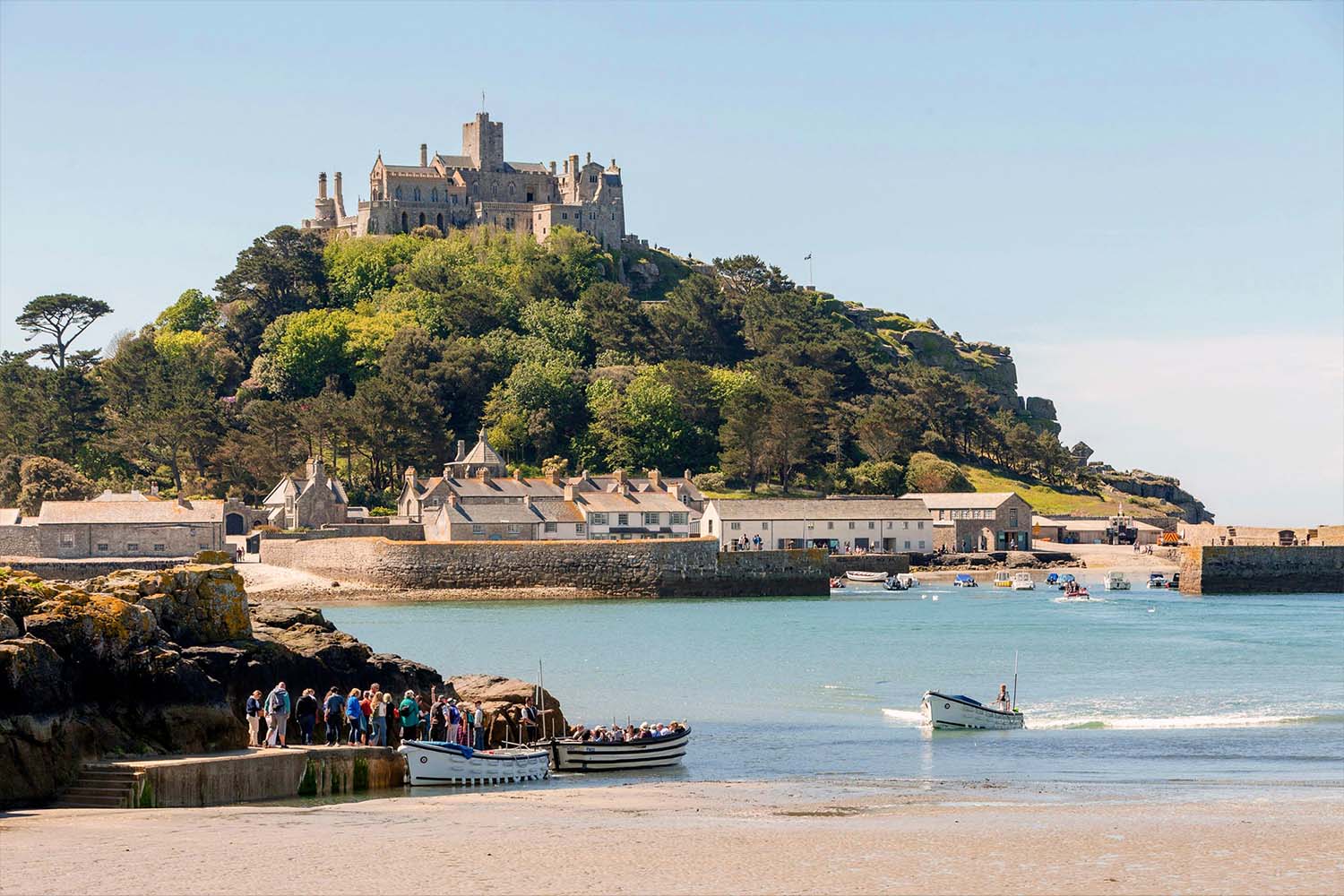
Explore Hidden Gardens and Subtropical Islands
Thanks to the aforementioned mild maritime micro-climate and warm Gulf Stream, Cornwall is blessed with some spectacular gardens, too. Opened in 2001, the space-age-looking biomes at the eco-educational Eden Project recreate different climatic zones from around the world and house thousands of plant species, but the summer Eden Sessions concert series here (headlined by everyone from Mumford & Sons to Motörhead) draws its share of crowds too.
A once-thriving 19th-century estate that fell into neglect, The Lost Gardens of Heligan were restored over 30 years ago and have since gained fame for their enchanting wild woodlands and Mud Maid sculpture, the “Sleeping Lady.” Seemingly plucked from the pages of a fairytale, Benedictine priory turned island castle St. Michael’s Mount has been home to the St. Aubyn family since the 17th century — hop on a boat at Marazion to explore the castle and its terraced gardens before stopping for afternoon tea (always cream first in Cornwall) in the Harbour Loft.
Last but not least, there is Tresco Abbey Gardens on the Isles of Scilly — a set of five inhabited (and around 140 uninhabited) islands located 28 miles from the Cornish coast (take the Scillonian III from Penzance or fly Skybus from Lands End), and famous for their sugar sand beaches and crystal-clear waters. The largest island, St. Mary’s, untamed Bryher, and two-mile-long St. Martin’s each have a distinct character — you could easily spend a week hopping between them all — but if you only have time for one, make it Tresco, whose subtropical gardens feature exotic plants from around the globe.
This article was featured in the InsideHook newsletter. Sign up now.
